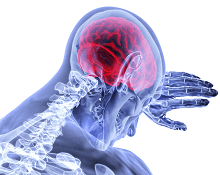 A new study funded by the Heart and Stroke Foundation has revealed that annual stroke occurrence rates in Canada have increased to 108,707—roughly one every five minutes. This highlights the need for strong stroke care, treatment and recovery systems across the country, as well as better prevention, according to the Canadian charity.
A new study funded by the Heart and Stroke Foundation has revealed that annual stroke occurrence rates in Canada have increased to 108,707—roughly one every five minutes. This highlights the need for strong stroke care, treatment and recovery systems across the country, as well as better prevention, according to the Canadian charity.
The analysis, which was based on hospital administrative data and has now been published in the Canadian Journal of Neurological Sciences, estimated the number of stroke events resulting in hospital or emergency/urgent care department presentation across Canada in 2017–2018.
“Our study has allowed us to paint the most comprehensive picture of stroke hospital and emergency room visits in Canada,” said the study’s lead author, Jessalyn Holodinsky (University of Calgary, Calgary, Canada). “We looked at hospital data from every province, and we also did modelling to confirm the numbers and account for areas where data [were] missing.”
Age is a risk factor for stroke and, as a large proportion of the population ages, the number of strokes has increased and will continue to do so, according to a Heart and Stroke Foundation press release. However, a stroke can happen at any age and more younger people are also having strokes, the release adds.
“These new data will help inform health systems planning,” added Michael Hill (Alberta Health Services, Edmonton, Canada), senior author of the study. “As stroke events continue to increase, emergency medical services and hospitals need to be ready to respond to ensure patients receive the right care in a timely way, leading to the best outcomes.”
The acute stroke management module of the Heart and Stroke Canadian Stroke Best Practice Recommendations (CSBPR)—which were published at the end of last year—contain important updates regarding stroke treatments, therapies and other aspects of care. Significant updates and new additions to the 2022 CSBPR for acute stroke management are based in part on the results from several new, important clinical trials.
The publication details that notable changes in this latest edition include recommendations pertaining to the use of tenecteplase; thrombolysis as a bridging therapy prior to mechanical thrombectomy; dual antiplatelet therapy for stroke prevention; the management of symptomatic intracerebral haemorrhage following thrombolysis; acute stroke imaging; pre- and postoperative care of patients undergoing endovascular thrombectomy; medical assistance in dying (MAiD); and virtual stroke care in the emergency department and inpatient care. An “explicit effort” was made to address sex and gender differences wherever possible, the recommendations also note.
As more people are surviving stroke, the number of Canadians who are living with stroke has increased to 878,000, and half of all people in Canada living with stroke need some help with daily activities, the release further states.
“Hospitals across the country provide excellent acute stroke care,” added Patrice Lindsay, director of Health Systems Change at the Heart and Stroke Foundation, and one of the authors of the study. “We need to improve access to rehabilitation and other services for people living with stroke, and their caregivers, so they have the support they need for the best recovery possible. And, we need a greater focus on prevention.”













